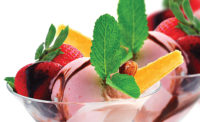Ingredient Challenges
Designed for Diabetes
With the continued emphasis on foods and beverages as pathways for diabetic control, there are many ingredients help formulators to make great-tasting, new diabetic products.


Creative application of fiber, resistant starch and plant proteins have allowed favorite foods, such as pasta, to not only remain on the table for persons with diabetes, but also to become active participants in blood-sugar management. SOURCE: Dreamfields Foods Inc.

Developers have taken full advantage of ingredients such as sweeteners, savory flavor enhancers, functional texturants and fibers to create diabetic-friendly foods that put flavor and satiety first. SOURCE: Life Style Chefs Inc.

While most products for diabetics focus on immediate blood-sugar fluctuations or generalized maintenance, processors are developing foods and beverages with targeted goals, such as long-term glucose regulation during the most crucial control times, such as overnight. SOURCE: Extend Nutrition, Inc.






Dual Action
Corn Advantages
On the Sweet Side
Point of Sweetness
Antioxidant Power
Emerging Ingredients
Looking for a reprint of this article?
From high-res PDFs to custom plaques, order your copy today!











